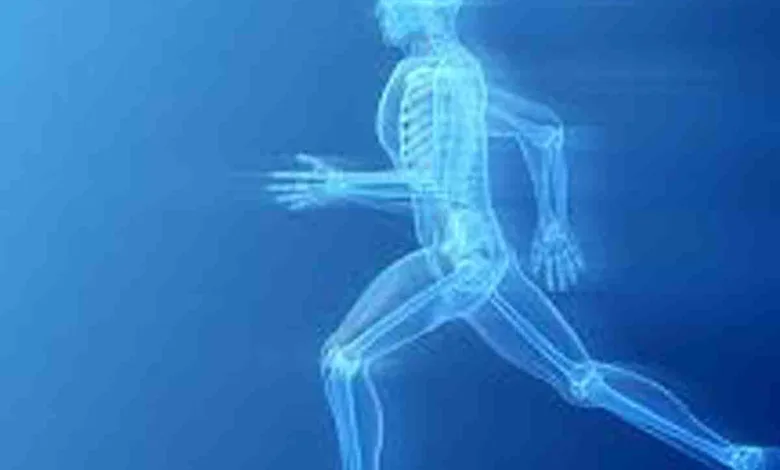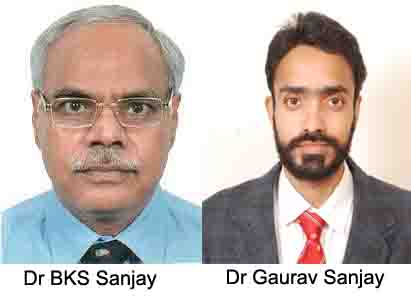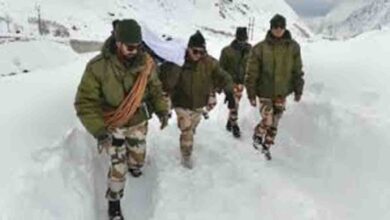Stronger bones, stronger nation

Thursday, 10 August 2023 | Dr BKS Sanjay & Dr Gaurav Sanjay
GUEST COLUMN

Bones support our body and allow us to move. They protect our brain, heart and other organs from injury. Nowadays, the younger generation has weak bones due to its lifestyle that lacks physical activity. Besides, their indulgence in smoking and intake of alcohol and steroids interferes with calcium absorption in the body which weakens the bones. Bones start forming as early as six months in the body and remain till the end of life. We need to provide a substantial amount of calcium, protein, vitamins and minerals for their proper growth and development. To develop the bones, in gestation, we need protein (amino acids), calcium, phosphate and vitamin D which go through the placenta from the mother to the foetus. If the mother’s diet is deficient in any of these essential nutrients the developing foetus is bound to suffer from the deficiency of bone mass Therefore, all pregnant women should take balanced and nutritious diet with extra milk, calcium and vitamin D supplement which is needed for the growth of the foetus in addition to normal need of any woman during pregnancy. Children who do not get the required dietary calcium may not grow tall or gain their potential height. Everybody should fulfill the recommended dietary allowance (RDA) of calcium to maintain good health. Always take a combination of calcium and Vitamin D to strengthen the bones throughout your life. This can be done preferably with a calcium rich balanced diet or with calcium supplements in the form of medicine.
Strong bones, strong muscles and flexible joints form the iron triangle that carries the most important load – the human body. Interestingly, 50 per cent of a person’s bones and the muscles are in the two legs. Both the legs together have 50 percent of the nerves and blood vessels of the human body and 50 per cent of the blood flows through them. It is the largest circulatory network that connects the body. About 70 per cent of the human activities in one’s life are done by two feet. The foot is the center of the body’s locomotion. Only when the feet are healthy then the conventional current of blood flows smoothly so people who have strong legs will definitely have a strong heart. Locomotion is important at every stage of life though it is more important in childhood. Overall physical, mental, social and economic development of any individual takes place only by locomotion. Aging starts from the feet upwards. As a person gets older, the accuracy and speed of transmission of instructions between the brain and the legs decreases, unlike when a person is young.
Normal walking contributes a lot to the overall development of any child. Cerebral palsy, polio, club foot are the main causes of limb deformities and orthopaedic disabilities in children but currently road traffic injuries in young age and osteoporosis in old age. The deformities and disabilities caused due to traffic injuries are man-made while osteoporosis is mainly a physiological and metabolic disease. We all can exert control to reduce the incidence of road traffic injuries but the same can’t be done for osteoporosis in a similar manner. Loss of bone strength can lead to osteoporosis-a disorder in which bones become very fragile and more likely to break. Older adults with osteoporosis are most vulnerable to breaks in the wrist, hip and spine. These fractures can seriously limit mobility and independence.
Osteoporosis is such a serious health issue that affects both men and women of all races but Asian women especially post-menopausal are at high risk. Certain medications like steroid and anti-epileptic drugs and certain conditions like hyperthyroidism, diabetes, unhealthy diet and sedentary work increase the probability of osteoporosis. Osteoporosis can be diagnosed by taking medical history, physical examination along with blood, urine and x-rays. But the gold standard test nowadays, is to measure the Bone Mineral Density, which can be measured by DEXA Scan and can help to confirm the diagnosis of osteoporosis.
The vitamins and minerals are needed irrespective of age in addition to protein to strengthen bones. As it has been seen, there is no deficiency in bone structure in rickets and osteomalacia, but such patients are deficient in vitamin D in addition to calcium and phosphorus. Minerals such as calcium, phosphorus, iron, magnesium, potassium, copper, selenium and zinc are very important for strengthening the bones. Milk, milk products and eggs are very good, cheap and natural sources of minerals.
The consumption of coarse grains should be increased as they are a good source of energy and the nutrients beneficial for the health of the bones while also supplying energy to the body. Millets are a good, cheap and accessible way to strengthen bones. We should make a habit of eating coarse grains and doing regular exercise not only when we are growing or becoming older but also from childhood.
(The authors are Dehradun-based orthopaedic surgeons. Views expressed are personal)






